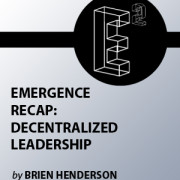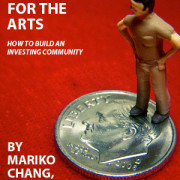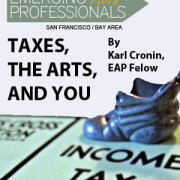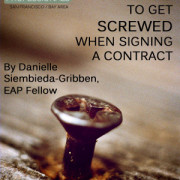 By Dania J. Wright
By Dania J. Wright
Pathways toward innovation
Being labeled an innovator is earned through extensive exploration and a bit of chance. “Collect programs and projects, learn some things, do it again,” recommends Marc Vogl, Executive Director of the Bay Area Video Coalition (BAVC) during the panel discussion on June 4, 2012, as part of Emerging Arts Professional’s annual convening, Emergence. His journey began upon founding Killing My Lobster (KML), with a collective of performing artists.
Following his immersion in the arts, Vogl transitioned and found opportunities in the technology sector. Working in startup environments, his entrepreneurial skills formed. Vogl credits much of what he learned in the private sector to his success in arts administration.
“Innovation is in the marketing,” Vogl states. He found that categorizing KML by the genres it encompassed (comedy and theatre) affected its engagement with media, funding partners, and patrons. This presented a publicity barrier. However, as Vogl’s marketing skills developed, he learned to think less about labels, and more about what KML wanted people to experience. It was then that he began to find success.
Passion and the courage to challenge the status quo are key characteristics of innovation, notes Cynthia Taylor, Assistant Director, Public Programs, Oakland Museum of California (OMCA). Similar to Vogl, Taylor credits the robustness of her arts administration skill set to exploration of a multitude of job functions and organizational settings.
She has contributed to the sector as an administrative assistant, an executive director, and almost every imaginable role in between. Focusing on the experience versus the title, Taylor learned the inner workings of the nonprofit arts organization — from the ground up. Regardless of the role, she advises emerging arts leaders: “Do your homework. Come with a plan, and be prepared to back it up with information. Put yourself in a position to be in that conversation, and give people a chance to join you.”
Taylor continues, “As a ‘changemaker,’ I was nothing without a posse. Everyone needs a team to navigate through this industry.” Recognizing the value of collaboration among internal and external stakeholders leads to success. Impact-driven work is work that is most gratifying. An innovator in arts administration must ask: What does a visitor/patron want? What will compel them to come to my institution? What will they gain from engagement with my institution and vice versa? Answering these questions creates a state of constant discovery, and community building.

Drawing by Todd Berman
The significance of innovation and the ideal environments in which it can flourish
The need and desire to remain relevant prompts arts organizations to foster innovation. On an individual arts administrator basis, Vogl shares: “We are all in this field because we want to create something that didn’t exist before.” Some ideal conditions needed to usher innovation include
- Intent to change
- Proactivity toward changes in the field
- Time to reflect on the work
- Transparency
- Feedback from external perspectives
- Flexibility in ideas and work allocation
- Stakeholder buy-in
Vogl reminds arts administrators that there are times during which complete redesign is unnecessary. “Don’t change for the sake of changing,” he expresses. Organizations may feel pressured to repair things that aren’t broken, due to industry trends, obligations to funding partners, or even promising opportunities that present themselves.
Managing opposing ideas and rejection
Reflection on the work is important, as it is part of the creative process. However, many funders operate differently, making the project timeline much more rigid. This dynamic can be better managed by setting the tone at the start of collaboration. Vogl states that organizations should ask, “Is our project in alignment with that of our funders?” The project could possibly stray from its original mission, in order to meet funding guidelines. There should be an assessment of what an organization is willing to forego in the name of maintaining the partnership.
Crowdsourcing, although far from new, has become increasingly popular with the aid of social media. Vogl notes that many organizations utilize this resource to reach a wider audience in their fundraising efforts. This is the result of decreased success via traditional means of development (e.g. grant programs). Organizations should also explore opportunities in social entrepreneurship. Diverse revenue streams (admission/ticket sales, tuition, etc.) supplement operating and program costs. When considering profit-driven activities, Vogl advises to “find what you’re good at and what people would value.”
Goal setting and measuring success
QuestionBridge, a Black male identity transmedia project, is currently on exhibition at OMCA. Taylor recognized that QuestionBridge’s presence at the museum could positively impact one of Oakland’s largest at-risk populations, young Black men, as well as the larger community. Taylor exclaims, “I knew this idea was innovative because it was hard to fund!” However, as word about the project spread, the museum began attracting partners (including BAVC) to aid in bringing the exhibit to Oakland. These partnerships led to curriculum design in Oakland Unified School District, and the establishment of Black male achievement programs, panels, and community meetings, mirroring the outcome that Taylor originally envisioned. She notes that the museum as a whole made a conscious decision to create social change, and that was a major contributor to its success.
When developing organizational aims, consider the following:
- How does cultural innovation address society’s value changes?
- What happens when galleries and museums finally become inclusive?
- How can your programs be more accessible to people?
- What experiences are you creating for people?
- How do you empower people?
In closing, innovation can be fostered in a multitude of ways. However, arts administrators should be conscious of when to practice innovation versus iteration. Perhaps a simple tweak is necessary instead of a total program reconstruction, Vogl remarks. There must also be balance in the exploration of projects. Vogl warns, “Don’t be a hoarder.” When it comes to arts administration, some projects must be dropped in order to strengthen those that have the greatest potential. The purposeful innovator constantly asks, “How can we make it better, and how can we get other parties in the conversation?” To which Taylor responds, “If you do it well, people will come.”
About Dania J. Wright
Dania J. Wright is a San Francisco Bay Area-bred artist. She is a Loyola Marymount University School of Film & Television alumna; having earned a BA in Animation, and Studio Arts minor. Wright’s professional experience ranges from art direction to visual art instruction. She previously interned for The Clorox Company, BET Networks, and MTV Networks. As a freelance artist, her clients include: Stanford University, Keetsa Mattress Company, and Loyola Marymount University. Wright also taught visual arts in K-12 schools, and a host of community-based organizations. Currently, she works in communications and development at The Carnegie Foundation for the Advancement of Teaching, and serves as Art & Education Program Co-Chair for the Museum of the African Diaspora (MoAD) Vanguard. Wright is pursuing her Master of Public Administration degree at the University of San Francisco, and will graduate on December 13, 2013 (woo hoo!). She enjoys discovering and creating new methods of fusing the arts, education, technology, and community development.
Todd Berman’s work can be found at The Art Don’t Stop.
 501 See (3) You Later?
501 See (3) You Later?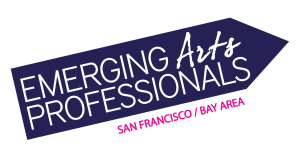
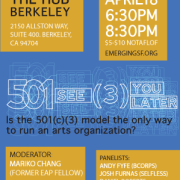
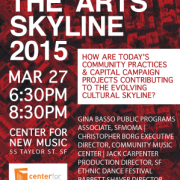

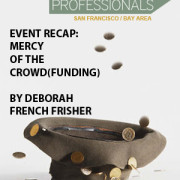

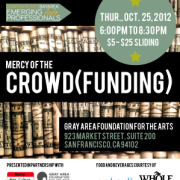

 Eleanor Hanson Wise is the co-founder and director of The Present Group, a project-based initiative that blurs the line between art production, commerce, advocacy, and philanthropy. She has developed a program for TPG that includes
Eleanor Hanson Wise is the co-founder and director of The Present Group, a project-based initiative that blurs the line between art production, commerce, advocacy, and philanthropy. She has developed a program for TPG that includes 
